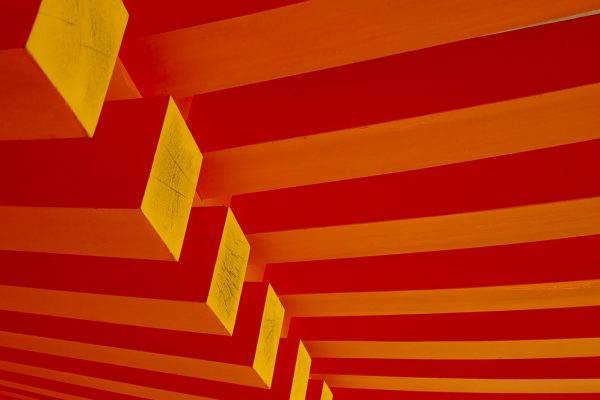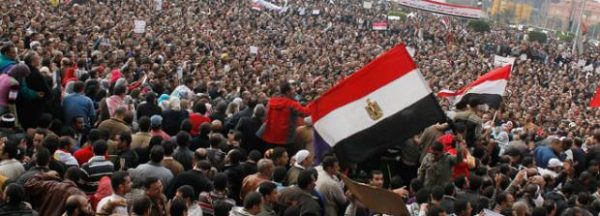‘What use are eggs on their own?’ is a question that resounds through Mieko Kawakami’s Breasts and Eggs, a capacious, contrary novel about pregnancy which is inflected with anti-natalist ideas. Initially asked by the narrator Natsuko’s sister, the question takes on a new urgency as Natsuko approaches forty. She has no real doubt that she wants a child, despite being asexual and single, and facing pressure to follow up on her successful first novel. Breasts and Eggs tackles the way she justifies this desire to herself, made near-impossible by the strictures of contemporary Japanese patriarchal society. But Kawakami’s primary concern is not the experience of mothering, even as it recalls in scope and subject recent novels such as Sophie Mackintosh’s Blue Ticket and Sheila Heti’s Motherhood. More radically, Kawakami wants us to think not only about giving birth, but about the very experience of being born.
Breasts and Eggs, translated by Sam Bett and David Boyd, takes its characters and setting from a novella initially published in 2008 (and awarded Japan’s prestigious Akutagawa prize). We first meet Natsuko as a 30-year-old Osakan writer living hand-to-mouth in Tokyo, receiving a two-day visit during an overbearing summer from her older sister Makiko and her silent 12-year-old niece Midoriko, whose diary entries about the travails of puberty and sex education interweave with Natsuko’s narration. Makiko – who works in an Osaka hostess bar and is worried about the effects of ageing on her employability – has come to the city to explore options for cheap breast augmentation, her obsession forcing a wedge between her and the other characters. In the second half, set ten years later in 2017, Natsu procrastinates over her second book, while researching options for artificial insemination. Her sexual identity is her biggest obstacle, emotional and practical: what right does she have to a child, she wonders, as an asexual woman who refuses the structure of normative coupling? Her research leads her to Aizawa, an advocate for non-anonymous donation, which is illegal in Japan, and his girlfriend Yuriko, a survivor of childhood sexual abuse. The two encounters prove decisive.
The two halves of Breasts and Eggs are united by Natsuko’s sense of alienation from her own body, first through her gender, and secondly through her asexuality. Her body is ‘this thing that contains me’, and she cannot reconcile it with the images of bodies she sees around her: ‘My monolithic expectation of what a woman’s body was supposed to look like,’ she writes, ‘had no bearing on what actually happened to my body.’ Poverty, menstruation and childbearing are depicted as entrapping cycles, reinforced by Natsuko’s painful memories of her and her sister’s childhood; Makiko’s stories about work draw a vivid picture of male privilege and the costs and demands of low-paid, physical labour on the body. Kawakami’s depiction of exhausting work made tolerable by female friendship recalls that of Natsuo Kirino’s Out, a superb thriller set on the night shift in a packaging factory in Tokyo, although Breasts and Eggs doesn’t take the same murderous direction. Like Makiko, the women who end up working at the bar must invest more money into staying there as their bodies and faces age, spending money on plastic surgery with their diminishing pay.
Kawakami’s prose veers between hyperreal granularity and passages of hallucinatory transcendence that have a paradoxical clarity. Natsu’s gaze is exacting, bringing the sweaty and imperfect bodies around her into sharp relief, and absenting her own by contrast. She fixates on her sister’s appearance – her ‘noticeably yellow’ teeth and her stomach like ‘a sundried fish’. In one particularly visceral scene at a sauna, Natsu describes her sister’s casual remarks on the pain of bleaching her dark nipples, a ritual she completes in order to reach a patriarchally-determined western beauty standard. In a single paragraph, Natsu compares Makiko’s breasts to ‘Nessie’ and ‘mosquito bites’, her nipples to ‘two control knobs’ or ‘a pair of rubber tires on their sides’. The body becomes unfamiliar, and breasts’ symbolism is exhausted, although this relief from the pressure and pain of being in a female body is only ever temporary.
In contrast to Rachel Cusk’s Outline trilogy or Jenny Offill’s Dept of Speculation, Kawakami is largely uninterested in exploring conflicts between the processes of art and mothering. Natsuko’s otherwise supportive editor Sengawa, a happily single and child-free woman, warns her: ‘Look at all the novels women writers publish once they’re mothers. They’re all about how hard it is to have kids and to raise them. Then they’re weirdly grateful about it all, too… Authors can’t afford to have middle-class values.’ Breasts and Eggs forms a critique of the idea that novels centred on motherhood are likely to be bourgeois and limited in their preoccupations, offering a vivid account of working-class life; in its aesthetic, it is closer to Yuko Tsushima’s impressionistic and yet gritty account of single motherhood Territory of Light than it is to any recent Western novels. Kawakami is clearly far more interested in how relationships between women play out in patriarchal capitalist society than she is in exploring the structure of that patriarchy, even as the women she depicts share experiences of unhappy marriages, divorce and flight from men. This is even more striking in the second half of the novel, where we get a prismatic view of mothering, pregnancy and domestic life through Natsuko’s discussions with various sets of (notably exclusively heterosexual and cis) women acquaintances. Great swathes of time are compressed in these shared stories of childhood, marriage, and childbirth, from women variously single, divorced and unhappily married, facing down the same societal forces, even as their lives depart from each other because of children and work.
Breasts and Eggs, arguably, is a novel imbued with ‘heterofatalism’, to use Sophie Lewis’s reformulation of Indiana Seresin’s concept ‘heteropessimism’, in which ‘performative disaffiliations’ with heterosexuality are ‘rarely accompanied by the actual abandonment of heterosexuality’. ‘We may love men, we declare,’ writes Lewis, ‘but we barely enjoy it, okay?; we are embarrassed; we are not contaminated by them; we are not they. In other words, we get to continue to be “women”. Perhaps, semi-unconsciously, we had worried that the very category of “women” had become untenable.’ Natsuko’s unswerving desire to be pregnant, despite renouncing this heterosexual dynamic, asks questions of the terms on which we structure ideas around gender, sexuality and parenthood. This is not to say that her asexuality is only a narrative convenience: there is a typically sly and funny scene where Natsuko fails to arouse herself, and a great deal of empathy for the loneliness she feels in forgoing romantic relationships in order to avoid having sex. Yet her abiding question – what right does she have to a child – takes on further significance in light of the cultural stigma around donation. In efforts to limit artificial insemination to an ideal heteronormative family unit, while ensuring availability, successive Japanese governments have prevented mandatory donor identification, leaving thousands of adults without knowledge of their biological fathers. Her burgeoning friendship – and possible romance – with Aizawa forces Natsuko to confront the consequences of this policy and the possible fate of any child she chooses to have by herself.
Yet as Natsuko contemplates her possible relationship with her own pregnant body, Kawakami presents an extreme alternative: society giving up on reproduction altogether. At the novel’s turning point, Yuriko suggests that birth itself might be considered a violation of bodily autonomy. In recent years, the anti-natalist movement – or at least discussion of it – has entered the mainstream, buoyed by work from philosophers including David Benatar and Sarah Perry. While climate change is a factor, anti-natalism is more controversially driven by a moral debate about whether it is justifiable to subject someone else to the difficulties of human existence, including the very fact of being ‘trapped’ in a body. Although she is not an anti-natalist, the philosopher Alison Stone has written recently about how being born is the most decisive and yet under-discussed aspect of human experience: ‘We can explain, at least to a point, why the particular body that I happen to be born with was conceived (my parents met, a particular sperm fertilised a particular egg on a given occasion – and the rest). But that does not explain why this body is the one whose life I happen to be leading and experiencing directly, from the inside. This is just a fact, and because it is inexplicable, a dimension of mystery pervades my existence.’
Evoking these arguments, Yuriko presents Natsuko with a dilemma that is reminiscent of the one in Ursula Le Guin’s ‘The Ones Who Walk Away from Omelas’, in which the happiness of a utopian town depends on the unhappiness of a single child. In a fever, Natsuko is haunted by Yuriko’s vision, and within this hallucinatory moment, she accepts the validity of the question. Should Natsuko’s wish for motherhood override the child’s potential feelings? For Yuriko, bringing a child into the world is ‘betting on another person’s life. Not yours.’ How fair is it to give birth, she asks, when for the individual being born ‘there’s no door. There’s no way back to how things were before’?
As is typical of this strange and unwieldy book, we’re presented with the most complicated and radical positions just as the narrative veers towards a less challenging and somewhat neat denouement. The notion of going into motherhood compromised by such an awful prophesy seems bleak, yet Kawakami engineers it to seem hopeful in comparison to the other possibilities for Natsuko – either a heterosexual relationship, or giving up on the human race altogether. This hopefulness is further bolstered by a plot machination which conveniently allows the writer to side-step all the ethical dilemmas around anonymous donation raised earlier on. It turns out that eggs are useful on their own, as long as you can deal with a few technicalities. Putting this aside, this raw and surprisingly funny novel’s entry into the literary dialogue around gender, motherhood and pregnancy is confrontational and necessary, critiquing the extent to which the choices we present to ourselves were ever choices in the first place.




